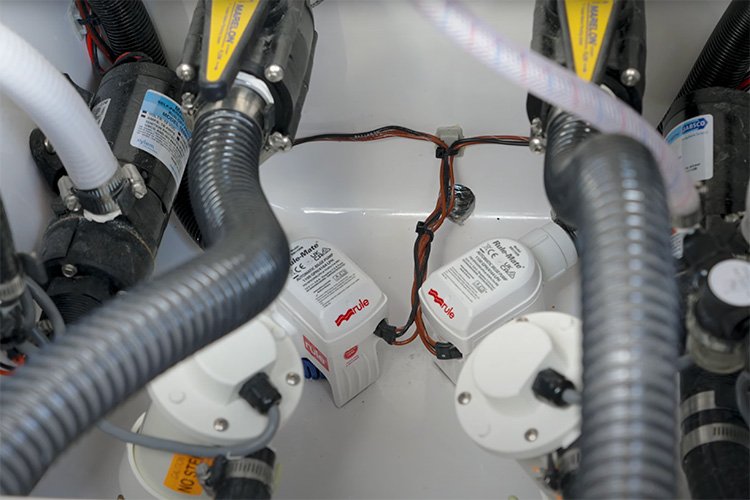When you’re out on the open water, nothing feels more liberating. Yet, with that freedom comes responsibility—especially when it comes to your boat’s safety and functionality. One of the unsung heroes in this realm is the bilge pump. This small but mighty device plays a critical role in keeping your vessel safe from unwanted water accumulation.
Whether you’re a seasoned sailor or new to boating, understanding how bilge pump work and why they’re essential can make all the difference on your adventures at sea. So grab a cup of coffee—or perhaps something stronger—and let’s dive into everything you need to know about bilge pumps!
Bilge Pump: A Step-by-Step Guide
Choosing the right bilge pump is your first step. Consider factors like the size of your boat and how much water it typically takes on. Submersible pumps are popular for smaller vessels, while larger boats might require centrifugal options.
Next, gather your materials. You’ll need a pump, hose, wiring kit, and possibly a switch depending on whether you want manual or automatic operation.
Positioning the pump correctly is crucial. It should be located at the lowest point in your boat’s hull to effectively remove excess water. Secure it well to prevent any movement during rough waters.
Wiring comes next; follow manufacturer instructions closely for safety. Connect the power source and ensure all connections are tight.
Test your setup before heading out. Activate the pump to confirm it’s functioning properly and draining efficiently—your peace of mind relies on it!
Harnessing the Power of the Bilge Pump
The bilge pump is a vessel’s unsung hero. It quietly operates in the background, ensuring that your boat remains safe and seaworthy.
Harnessing its power means understanding its capabilities. These pumps remove unwanted water from the bilge—a space prone to flooding due to leaks or rainwater. When properly installed, they act swiftly, preventing potential disasters.
Modern bilge pumps come equipped with automatic sensors. This feature allows them to activate without manual input, responding immediately when water levels rise.
Choosing the right size and type for your boat is crucial. A well-suited pump can handle various situations—whether it’s a small trickle or torrential downpours.
Regular checks are essential too. Ensuring the system is clear of debris will maximize efficiency and longevity while safeguarding your boating adventures against unexpected setbacks.
Why Is a Bilge Pump Necessary?
A bilge pump is essential for any boat owner. It serves a crucial purpose in maintaining the safety and integrity of your vessel.
Water can accumulate in the bilge area due to leaks, rain, or even condensation. If left unchecked, this water can lead to serious issues, such as instability or structural damage.
In emergency situations, a functioning bilge pump can mean the difference between a minor inconvenience and disaster. It actively removes excess water, helping to keep your boat afloat and operational.
Moreover, certain regulations require boats of specific sizes to be equipped with reliable pumping systems. Compliance not only protects you but also ensures other vessels on the water are safe from potential hazards.
Investing in a high-quality bilge pump adds an extra layer of security while you’re out on the waves. Regular maintenance will ensure it remains effective when you need it most.
10 Easy Steps to Installing a Bilge Pump
Installing a bilge pump can be straightforward. Start by gathering your tools: a drill, screws, and wiring materials.
Next, select an ideal location for the pump. The spot should be close to the water source but away from potential damage. Mark this area carefully.
Drill holes for mounting the pump securely in place. Ensure it is level to function correctly.
Now, connect the discharge hose. This allows water to exit your vessel efficiently.
Wiring comes next. Connect the pump’s wires to your power source with attention to polarity—red usually indicates positive.
Seal all connections with waterproof tape or connectors. This prevents any leaks that could compromise performance.
Once everything is set up, test the system thoroughly before heading out on any adventures. Regular testing will help ensure reliability when you need it most!
How Does a Bilge Pump Work?
A bilge pump is a vital component on boats, designed to remove unwanted water from the hull. It operates through a simple yet effective mechanism.
When water enters the bilge, it triggers the float switch. This switch activates the pump, prompting it to start drawing in water. The pump then pushes this water out through an outlet hose.
Most bilge pumps are either manual or automatic. Manual pumps require human operation, while automatic ones work independently once set up. Their efficiency depends on proper placement and size relative to your vessel’s needs.
Understanding how these pumps function helps boaters ensure their systems run smoothly. Regular checks and maintenance can prevent failures at critical moments when you least expect them!
10 Tips for Maintaining Your Bilge Pump
Maintaining your bilge pump is crucial for reliable performance. Regular checks can save you from unexpected failures.
Start with a visual inspection. Look for signs of wear, corrosion, or debris that could block the pump’s operation.
Test the float switch monthly. Ensure it moves freely and triggers the pump at appropriate water levels.
Keep connections clean and tight. Loose wires can lead to power issues, so check them regularly.
Clean the strainer often to prevent clogging. A clear pathway helps your pump operate efficiently.
Consider upgrading to an automatic model if yours isn’t already equipped. It adds convenience by activating as needed without manual intervention.
Lubricate any moving parts as recommended by the manufacturer’s guidelines for optimal function.
Don’t forget seasonal maintenance! Before launching in spring, inspect everything thoroughly after winter storage.
Record all maintenance activities in a logbook to track replacements and repairs over time.
Conclusion
Understanding the importance of a bilge pump is crucial for any boat owner. This device plays an essential role in keeping your vessel safe and operational. By following the steps outlined for installation, you can ensure that your bilge pump functions effectively when needed.
Regular maintenance is key to extending the life of your bilge pump. By implementing simple upkeep tips, you prevent costly repairs down the line and enhance safety while out on the water.
Whether you’re a seasoned sailor or just starting, knowledge about bilge pumps equips you with confidence and peace of mind as you navigate through various conditions at sea. Stay informed, stay prepared, and enjoy smooth sailing ahead.




